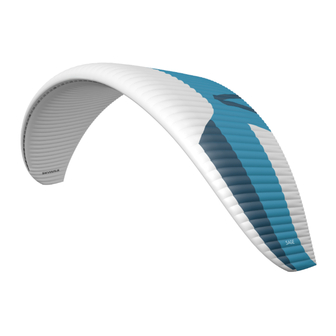
Table of Contents
Advertisement
Quick Links
Advertisement
Table of Contents

Summarization of Contents
1 INTRODUCTION
Welcome and Overview
Welcome to skywalk! Product-specific info to help you get to know your new paraglider.
2 DESCRIPTION
Pilot Requirements
For pilots who master abnormal flight conditions and fly actively and regularly.
Scope of Delivery
The SAGE comes standard with SOFTBAG, Packing Tube and "BASIC GUIDE".
5 ACCELERATION SYSTEM
B-Riser Control
Handle on the B-riser to even out turbulence, speed and pitch while flying on speed bar.
6 FLIGHT TECHNIQUES AND CHARACTERISTICS
Winch Towing
Glider is suited for winch towing. Requires certified winches and trained operators.
Flying with a Motor
Currently no certification for flying with a motor. Check status with skywalk directly.
7 DESCENT TECHNIQUES
Big Ears
Descent method for quickly leaving dangerous areas with higher forward speed than sink speed.
B-Line Stall
This maneuver is not possible with the SAGE. Use spiral dive or big ears for fast descent.
8 EXTREME FLIGHT
Collapses
Provocation of side/front collapses by pulling A-risers is not possible and can lead to unpredictable reactions.
9 MATERIALS
Wings and Ribs
Details materials used for upper sail, lower sail, and ribs of the glider.
Lines
Details materials used for main, middle, top, and brake lines.
Risers
Details material used for risers (Cousin Freres 7mm webbing).
Pulleys
Details pulley type (Ronstan ball bearing).
Shackles
Details shackle type (Jootech oval).
11 HOMOLOGATION
Folding Lines
Special folding lines used for certification; may affect collapse/recovery behavior.
18 TEST PROTOCOL
Examinations of the Lines
Checklist for firmness, trimming, checkflight, patch, and identification plate of the lines.
Line Condition
Options to describe the condition of the lines: New, Very good, Good, Well used, Heavily used, No longer airworthy.
Repairs Made
Indicates whether any repairs have been made to the lines.
Canopy Visual Check
Checklist for visual inspection of canopy surfaces, profiles, lines, leading/trailing edges.
Lines Visual Check
Checklist for visual inspection of lines for seams, abrasion spots, and core withdrawals.
Connection Parts Visual Check
Checklist for visual inspection of suspension line screw locks and risers.
Length Measurement
Check for length measurements of risers and lines.
Canopy Examinations
Checklist for firmness and porosity of the canopy.













Need help?
Do you have a question about the SAGE 95 and is the answer not in the manual?
Questions and answers